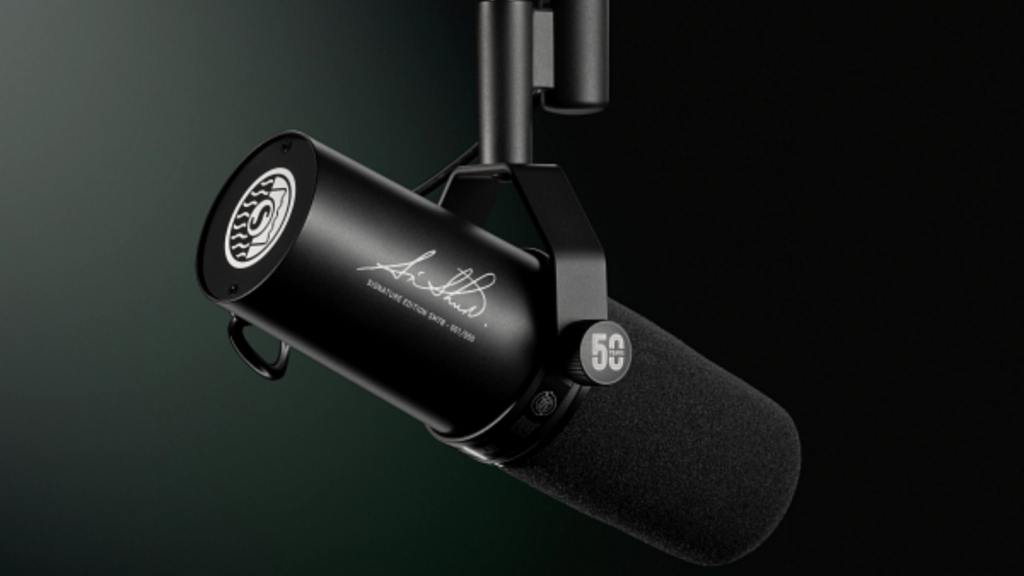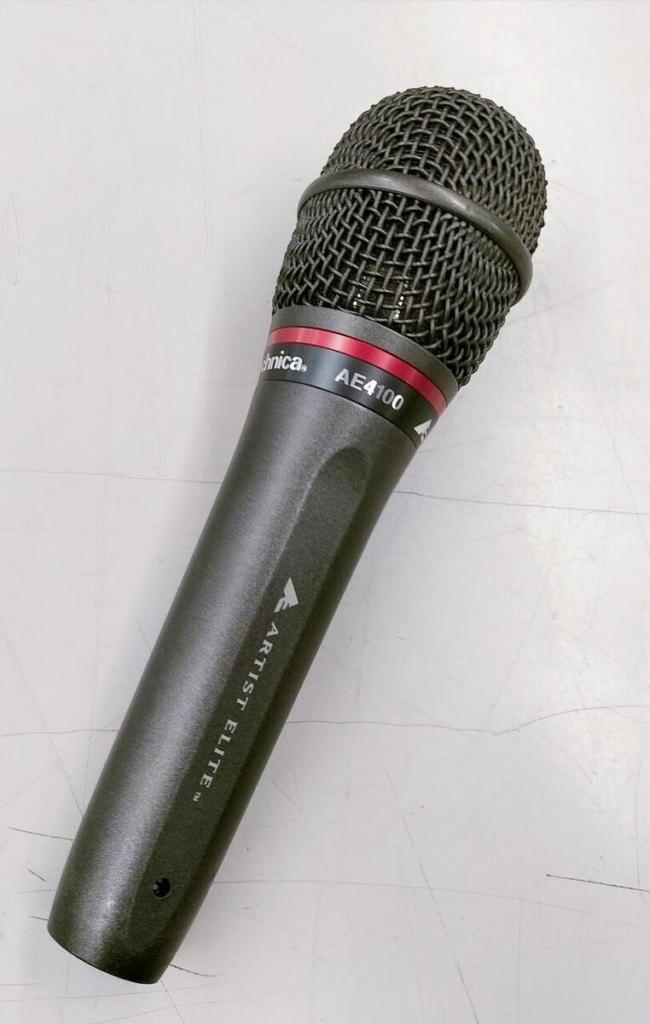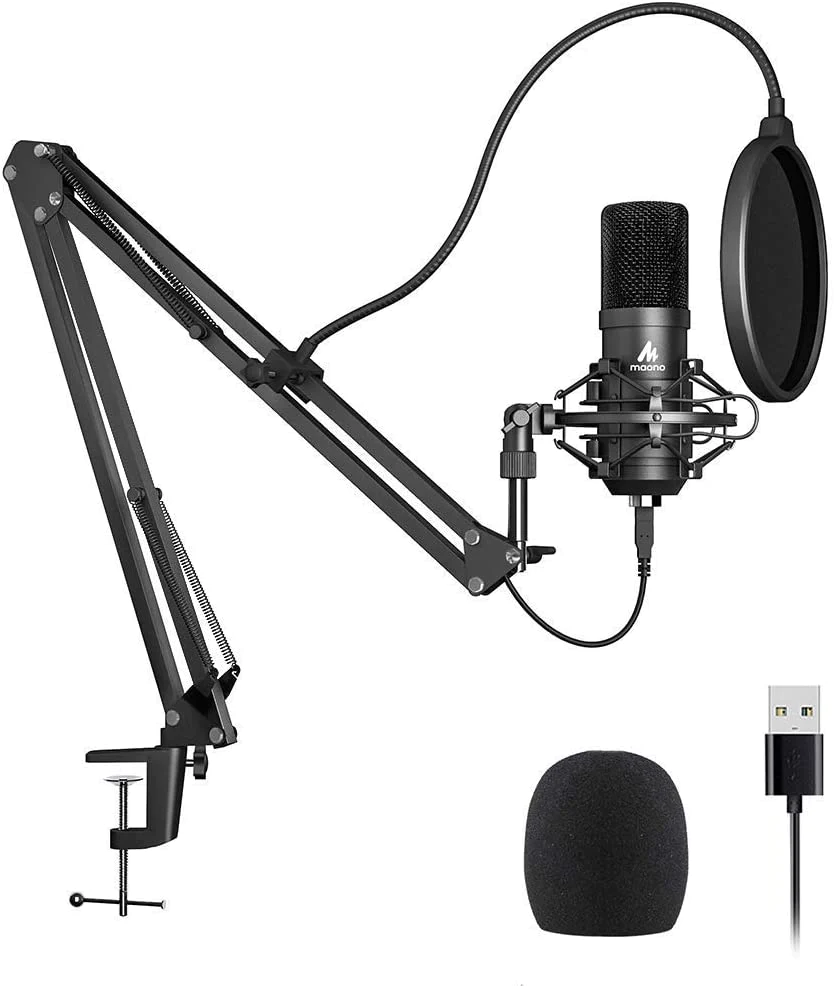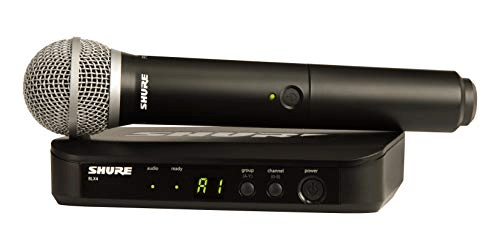Whether you’re belting out powerhouse vocals or serenading with a soft melody, the right microphone can elevate your singing to new heights. A dynamic microphone, revered for its resilience and versatility, is a go-to for performers across the globe. From the rugged stages of rock concerts to the intimate settings of jazz clubs, dynamic mics capture the essence of the voice while withstanding the rigors of use. In this list, we’ll explore the crème de la crème of dynamic microphones tailored for vocalists—a guide to help you find the perfect sonic match for your unique voice and style. Now, let’s dive into the world of dynamic mics and discover which one sings to your tune.
When looking for the best dynamic microphone for singing, there are several key criteria to consider to ensure that the microphone meets the needs of vocalists:
- Sound Quality: The microphone should deliver clear, crisp, and natural vocal reproduction, with a balanced frequency response that enhances the properties of the singing voice.
- Durability: Given that dynamic microphones are often used live on stage, they should be rugged and capable of withstanding rough handling, drops, and various environmental conditions.
- Feedback Rejection: A good singing microphone should minimize feedback, especially in a live setting, by having a cardioid or supercardioid pickup pattern that focuses on the singer’s voice while rejecting sounds from other directions.
- Versatility: It should perform well across a range of genres and singing styles, from soft ballads to rock and roll, providing a good level of control and adaptability.
- Ease of Use: The microphone should be user-friendly, not requiring extensive setup or adjustment, thus allowing performers to focus on their singing.
- Price: While not a direct indicator of quality, the microphone should offer good value for money, balancing cost with features and performance.
Keeping these criteria in mind will help in identifying microphones that offer the best performance for singers across various settings and use cases.
Please note that actual prices can vary over time and through different vendors.
| Feature | Shure SM7B | Electro-Voice RE20 | Sennheiser MD 421 II | Shure SM58 | Audio-Technica AE4100 |
| Price (Approx.) | $400 | $450 | $380 | $100 | $200 |
| Frequency Response | 50 Hz – 20 kHz | 45 Hz – 18 kHz | 30 Hz – 17 kHz | 50 Hz – 15 kHz | 90 Hz – 18 kHz |
| Polar Pattern | Cardioid | Cardioid | Cardioid | Cardioid | Cardioid |
| Impedance | 150 Ω | 150 Ω | 200 Ω | 150 Ω | 250 Ω |
| Sensitivity | -59.0 dBV/Pa (1.12 mV) | -56.0 dB (1.6 mV) @ 1 Pa | 2 mV/Pa (-54 dBV) | -54.5 dBV/Pa (1.85 mV) | -55 dBV/Pa (1.7 mV) |
| Weight | 766 g (27 oz) | 737 g (26 oz) | 385 g (13.6 oz) | 298 g (10.5 oz) | 310 g (10.9 oz) |
| Additional Features | Detachable windscreen; XLR | Variable-D design; High-pass filter | Five-position bass roll-off switch | Pneumatic shock-mount system; Durable | Superior internal shock mounting; Aggressive sound |
Keep in mind that these specifications are subject to change by the manufacturers, and accessory additions or different versions may modify some details. For potential buyers, it’s also crucial to consider how the microphone feels in hand, its build quality, and how well it suits their specific singing style and voice type. Reading professional reviews and listening to audio samples or seeing the microphone in use can also be very helpful when making a decision.
Shure SM7B

The Shure SM7B dynamic microphone is a legend in the world of vocal recording and broadcasting for good reason. Esteemed for its rich, smooth sound and ability to handle a broad spectrum of voices, the SM7B is a favorite among podcasters, musicians, and voice-over artists alike. From its sleek and robust build to its unmatched audio clarity, it stands out not only as a classic choice but as a beacon of quality in the dynamic microphone market.
In my hands-on experience with the SM7B, the first thing that struck me was its substantial build quality. It feels like a tool engineered to last a lifetime. Sonically, it’s very flattering on a range of vocal tones, delivering a warm, clear output that mitigates plosives and background noise expertly thanks to its built-in pop filter and cardioid pickup pattern. It’s phenomenal at naturally capturing the nuances of a performance without the harshness that some other mics can introduce.
For singers in particular, the SM7B can brilliantly convey the depth and dynamic range of their voice, all while rejecting off-axis noise — an excellent choice for both studio recording sessions and live performances.
Specs
- Transducer Type: Dynamic
- Polar Pattern: Cardioid
- Frequency Response: 50 Hz to 20 kHz
- Output Impedance: 150 ohms
- Sensitivity: -59.0 dBV/Pa
- Advanced electromagnetic shielding to block hum from computer monitors and other studio equipment.
Pros:
- Exceptional audio quality that captures vocals with warmth and presence.
- Built-in air suspension shock isolation and pop filter to minimize handling noise and plosives.
- Versatile enough for singing, podcasting, and voice-over work.
- A cardioid pattern that focusses on the main source of sound while minimizing background noise.
- Durable construction that is built to withstand rigorous studio use.
Cons:
- The price point might be steep for some budgets.
- Requires a decent preamp to get the best out of it due to its low output.
- Some may find it quite heavy, potentially requiring a robust stand.
- Not as plug-and-play as some other microphones, possibly necessitating an experienced user to get the most out of it.
Price
The Shure SM7B typically retails around $399. While this may be a significant investment for some, it’s important to remember that with microphones, you often get what you pay for. The SM7B, therefore, represents a great value, particularly when you factor in its robust build and professional-grade sound quality. It’s a purchase that’s not so much an expense as it is an investment into your audio endeavors.
In my opinion, if you’re serious about your singing and want a microphone that has been tried and tested by professionals in various audio industries over the years, the Shure SM7B might just be the workhorse you need in your mic locker. It’s not the kind of microphone you’ll feel the need to upgrade from any time soon, if ever.
Electro-Voice RE20

Overview:
The Electro-Voice RE20 is a classic choice that’s highly regarded in the world of audio for its sound quality and versatility. Often used in radio stations and recording studios, it has a celebrated reputation for capturing vocals with a pleasing natural tone while reducing the proximity effect—a common problem where bass frequencies get exaggerated when a sound source is close to the microphone. This makes the RE20 an excellent option for both seasoned vocalists and those new to recording or performing.
My personal experience with the RE20 has always left me impressed due to its ability to handle a wide range of vocal styles and tones. There’s a unique character it brings to the table, providing a smooth and controlled sound that’s hard not to appreciate, especially when belting out vocals that require clarity and precision.
Specs:
- Type: Dynamic cardioid microphone
- Frequency Response: 45Hz – 18kHz
- Connector: Three-pin professional audio (XLR)
- Polar Pattern: Cardioid
- Unique Features: Variable-D design, internal pop filter
Pros:
- The RE20 provides exceptionally flat frequency response, which ensures that your vocals are true to life, with no added coloration.
- Its Variable-D design eliminates proximity effect, allowing singers to move freely without worrying about varying bass response.
- The built-in pop filter is also a bonus, mitigating plosives and breath noise, which can be extremely beneficial when recording vocals.
- It’s quite durable, which is comforting to know that it can survive the rigors of onstage performance or the constant use in a studio environment.
Cons:
- Given its stellar performance, it is a bit on the heavier side, which might not be conducive to all setups, especially if you’re relying on less robust mic stands.
- Additionally, some might find it less accessible price-wise compared to other dynamic microphones on the market.
Price:
As for the price, the RE20 generally sits at the higher end of the spectrum for dynamic microphones. It’s certainly an investment piece, but for those serious about their audio quality, it’s a worthwhile one. It usually retails anywhere from $400 to $500, which is a testament to its professional-grade capabilities. However, it’s always worth shopping around or waiting for deals that may bring that price down somewhat.
Sennheiser MD 421 II

The Sennheiser MD 421 II is a testament to enduring design and sound quality that has made it a favorite among professionals for decades. This mic captures every nuance of a singer’s voice, offering clarity and warmth that can make a performance truly stand out. What sets the MD 421 II apart is its versatility. Whether you’re dealing with rock, pop, or even spoken word, the natural sound reproduction and glass-clear highs make it a dynamic performer that can tackle a wide range of frequencies without losing that defined Sennheiser character.
Specs
- Pickup Pattern: Cardioid
- Frequency Response: 30 Hz – 17 kHz
- Impedance: 200 ohms
- Connector: XLR-3
Pros:
- The tonal clarity is something that catches your ear right off the bat. Vocals come out prominent and defined.
- Durability is a given with the MD 421 II. It feels like a microphone that will last a lifetime with proper care.
- Handles high sound pressure levels exceptionally well. You can sing your heart out without worrying about distortion.
- Versatility in its application means you’re not confined to one genre or style of singing, making it ideal for multi-purpose studios.
Cons:
- The MD 421 II comes with a unique clip design that can be a bit cumbersome until you get the hang of it.
- It might pick up more ambient noise compared to other dynamic microphones due to its sensitivity, so it’s not the best choice for untreated recording spaces.
Price
The Sennheiser MD 421 II is positioned as a mid-to-high range microphone when it comes to pricing. If you’re committed to your craft and want a microphone that will be a long-term investment in your singing career, the MD 421 II justifies its price tag with performance and durability. However, for casual singers or those on a budget, it may seem a bit steep.
Shure SM58

The Shure SM58 is a legendary dynamic microphone that has earned its place as a staple in the world of live vocals. Known for its reliability and durability, this microphone has been the go-to choice for musicians, vocalists, and sound engineers for decades. What sets it apart is its focus on clarity and detail in vocal reproduction, ensuring that singers can convey every nuance of their performance.
From the moment you handle the SM58, its build quality is evident. It has a heft that reassures you of its road-worthiness. In practical use, it’s as straightforward as a microphone can get—just plug it in, and you’re good to go. I’ve used it in various settings, from small acoustic gigs to loud band settings, and it has consistently provided clear and present vocal sounds without the need for excessive equalization.
Specs:
- Type: Dynamic
- Frequency Response: 50 to 15,000 Hz
- Polar Pattern: Cardioid
- Output Impedance: 150 ohms
- Sensitivity: -54.5 dBV/Pa (1.85 mV)
Pros:
- Exceptional clarity and vocal presence, making it ideal for both lead and backing vocals.
- Cardioid pickup pattern does an excellent job at rejecting off-axis noise, which greatly helps in live settings where stage noise is prevalent.
- Sturdy construction that can withstand drops, knocks, and the rigors of touring.
- Consistency in performance, providing a reliable sound across different environments.
- Easy to handle and doesn’t require phantom power, which simplifies setup.
Cons:
- Some might find the design a bit dated compared to newer microphones.
- Lacks the versatility of more expensive studio mics and may not be the first choice for recording intricate vocal nuances in a studio setting.
- The frequency response is not as flat or wide as some other dynamic microphones, which may limit its use on instruments or more complex vocal styles.
Price:
The affordability of the SM58 is perhaps one of its strongest points. Typically priced around $99 to $120, it offers professional level audio performance that doesn’t break the bank. Given its robust construction and consistent sound quality, the SM58 is an investment that often outlives its contemporaries.
To conclude, the Shure SM58 isn’t trying to be the flashiest or the most revolutionary microphone on the market—it doesn’t need to. It delivers a dependable, high-quality sound that has been refined over years of use by countless vocalists. If you need a solid and straightforward dynamic microphone for singing, especially in live situations, the Shure SM58 is a choice you can never go wrong with.
Audio-Technica AE4100

The Audio-Technica AE4100 is a dynamic handheld microphone designed with the vocalist in mind. It boasts a robust build that feels substantial in your hand, an indication of thequality you can expect from its performance. The sound reproduction is exceptional, capturing the nuances of a singer’s voice with clarity and precision.
One standout feature of the AE4100 is its ability to deliver a smooth frequency response with a slight presence boost in the upper-midrange. This translates to vocals that cut through a mix with ease, giving them an edge during live performances or in the studio. The cardioid polar pattern provides excellent isolation of the sound source and minimizes background noise, ensuring that your voice remains center stage.
Further enhancing the usability of the AE4100 is the multi-stage grille design which offers excellent protection against plosives (those pesky ‘p’ and ‘b’ sounds that can produce a pop in the audio) and sibilance, without the need for an external pop filter. The microphone also handles high sound pressure levels remarkably well, so belting out your high notes shouldn’t be a cause for concern.
Specs:
- Frequency Response: 90 Hz to 18 kHz
- Polar Pattern: Cardioid
- Output Connector: Integral 3-pin XLRM-type
- Element: Dynamic
- Voice Coil: Copper-clad aluminum wire
Pros:
- Crystal clear vocal reproduction with a natural presence boost for intelligibility.
- Built for longevity with rugged construction.
- Excellent off-axis noise rejection which is ideal for live stages where monitor and instrument bleed can be an issue.
- It does not require phantom power, which is convenient and ensures compatibility with various equipment.
Cons:
- Some might find the presence boost a bit too aggressive for certain applications or voice types, requiring some equalization to smooth out.
- It lacks the versatile switching options found on some competing microphones, like bass roll-off or attenuation pads.
Price:
As of my last update, the Audio-Technica AE4100 typically sits in the mid-range bracket of dynamic vocal microphones, meaning it strikes a balance between affordability and professional performance. The price usually hovers around the $170 – $200 mark, although prices can fluctuate based on retailer and region.
Personal Opinion:
In my experience, the AE4100 impresses with its solid performance, especially in a live setting. The slight upper-midrange emphasis really benefits vocalists who need to be heard clearly over heavy instrumentation. Durability is also a highlight – this microphone feels like it can withstand the rigors of touring without missing a beat.
For those looking for a dynamic microphone that balances cost with a high-quality output, the AE4100 is a formidable contender. While it may not be the absolute best in any single category, it competently meets the needs of most singers, especially those performing in a live context. The few drawbacks it does have are minor and can be compensated for with proper technique and audio processing, making it a reliable workhorse that won’t let you down.
Conclusion:
In conclusion, selecting the best dynamic microphone for singing involves balancing sound quality, durability, and ease of use. Whether you’re performing on stage or recording in a studio, the right dynamic microphone can elevate your vocal performance. From our comprehensive review, it’s clear that there are options available for every type of singer and budget. Remember to consider your specific needs and the context in which you’ll be using the mic to make the best choice. Happy singing!
FAQs:
- Why choose a dynamic microphone for singing?
Dynamic microphones are versatile, typically more rugged, and less sensitive to moisture, making them ideal for live performances and powerful vocals. - Do I need a pop filter with a dynamic microphone?
While dynamic mics are less sensitive to plosives than condenser mics, using a pop filter can still help to reduce unwanted noise and ensure clearer vocal recordings. - Can dynamic microphones be used for recording instruments too?
Absolutely. Many dynamic microphones have a good frequency response and can handle high sound pressure levels, making them suitable for recording a variety of instruments alongside vocals.

































.png)








